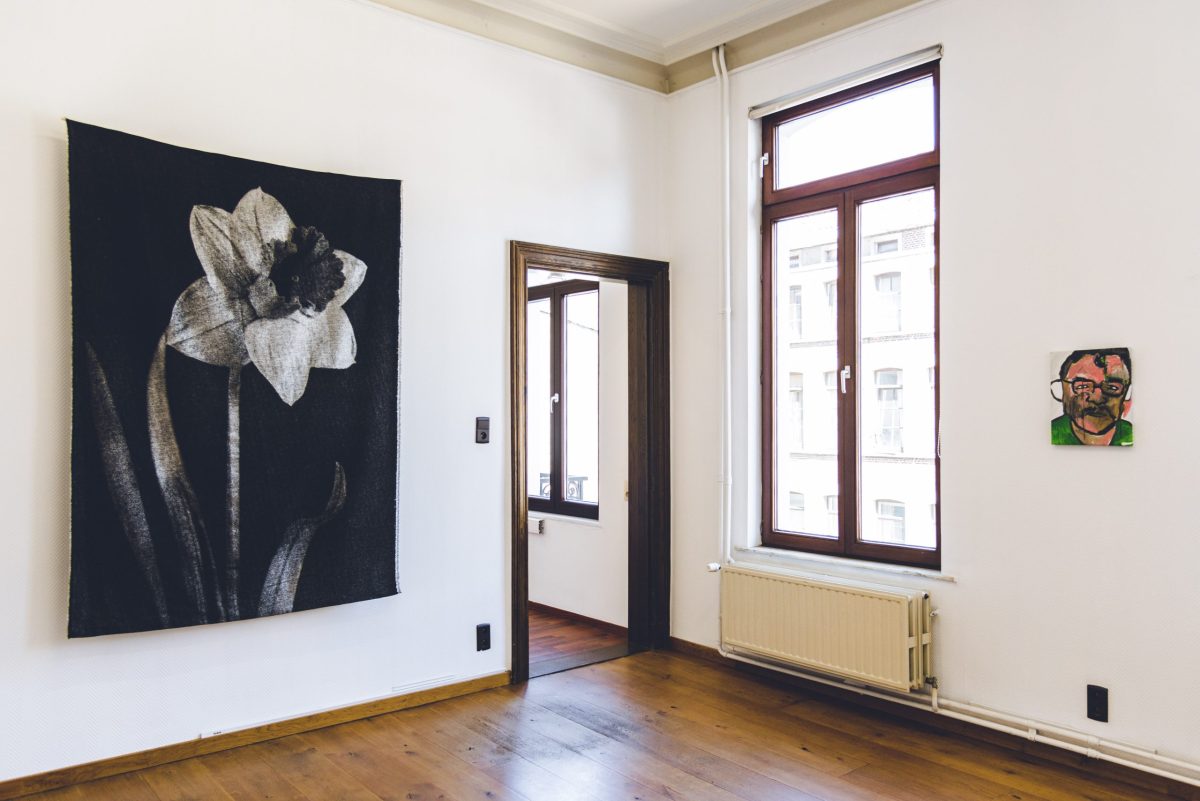[ad_1]
Ghent, Belgium—a port city in the northwestern region of the country—is a city of contrast. Gothic architecture and cobblestone streets in the city’s center seem to be at odds with the industrial warehouses and gentrified neighborhoods on the outskirts. While many of the city’s historic buildings continue to be renovated or demolished, Transient Projects to People (Ti-Pi) is offering one of these doomed homes a gorgeous goodbye.
Helmed by curator and contemporary artist Matthias Vico Persson and assisted by Johannes Kämper, Ti-Pi exists thanks to a partnership with Caroline Staessens of Studio Monumento, a Belgian company that specializes in repurposing abandoned buildings for cultural affairs. Ti-Pi’s inaugural exhibition, The Most Sunny Hour of Your Night features 13 different international artists whose work is placed throughout three floors of a stunning townhouse.

“Placing works in a setting like this, as opposed to a traditional one, offers a more intimate and less intimidating experience for viewers,” Persson tells us. “The history of the building can be felt alongside the artworks and one is able to imagine the work in their own homes.”
Upon entering the exhibition through a set of wooden doors on the first floor, visitors meet an arsenal of geometric flags by Damien Poulain that hangs overhead, as if protecting Willem Boel‘s recycled metal sculpture in the next room.

The out-of-commission marble fireplaces on the second floor are accompanied by works from painter Shirley Villavicencio Pizango, sculptor Machteld Rullens, weaver Sarah Kelly and Nathalie Vanhuele. Antoine de Winter’s photographs are located a room away, and those who take a moment to look closer at the golden duo may also catch a glimpse of the building’s humble balcony in their reflection. Further illuminating the building’s original features is Thomas Renwart‘s grand, woven daffodil tapestry and small pieces—reminiscent of puzzle pieces—by Jan Laroy and Katrin Bremermann.
“When putting together the rooms and deciding where to place the work, I really wanted to create a dialogue that felt cohesive and balanced,” says Persson. “And, of course, in such a way where the works can also stand on their own.”

The ascension to the third floor of the house feels like a divine initiation as a 15-foot multi-colored stained-glass window sits on the staircase’s half-space landing. As the sun’s rays beam through it, the second floor’s foyer is illuminated in a kaleidoscope of color. This dramatic greeting matches the works found in the final room of the exhibition. Marius Ritiu’s gold and bronze mask, resembling an ancient Grecian one, welcomes guests into a room where a large grid tapestry by Roméo Mivekannin, the largest piece in the exhibition, hangs proudly.

While each work is unique, the curatorial direction seems to point to two prerequisites in the selected art: the works must, first, be independently beautiful. And secondly, they all require a closer look in order to capture the deeper, oftentimes hidden, details within. This is without surprise: The Most Sunny Hour Of Your Night is inspired by a text written by poet and novelist Rainer Maria Rilke and advises people to take a deeply introspective journey when working creatively free of outsider opinion.
“We live in a world that is both constantly connected and constantly distracted; where our interactions seem to lie primarily on a digital plane,” Persson writes in the exhibition notes. “But, what we lack most of all, is the practice of facing each other—and ourselves—openly and fully, accepting the human complexities, and taking time to focus.”

While the exhibition continues until 19 June, physically and online (a portion of the proceeds from internet sales will be donated to artists and art professionals affected by the war in Ukraine), demolition is the building’s future, with only but a year until a goodbye. “In this way, the home gets a second life before it is completely changed,” Staessens tells us. “In my life, I’ve always wanted to give back to the arts and offer my support, and through working with people like Matthias, I can do so even though each project is temporary.”
The building’s destiny also creates creative freedom, Persson explains. “The exhibition space will work in a nomadic manner— something that I actually don’t mind. I actually enjoy it,” he says. “It presents an interesting challenge of having to adapt to a different building and ensure that the artwork is exhibited properly. I love the newness of it.”
Perhaps it is the work of Sepideh Farvardin found in The Most Sunny Hour of Your Night which accurately understands this relationship between the historical home and its second, art-filled chance. One of the photographer’s images is of a striking blue umbrella, abandoned on the ground and broken at the ribs. The other portrays an unused amusement park overtaken by the forest. “I like to photograph abandoned things,” Farvardin tells us. “There aren’t any humans in these photographs, yet you can feel that their presence is surely missed.”
Images courtesy of Ti-Pi
[ad_2]
Source link https://coolhunting.com/culture/ti-pi-art-space-gives-new-life-to-an-abandoned-townhouse-in-ghent-belgium/

Leave a Reply
You must be logged in to post a comment.